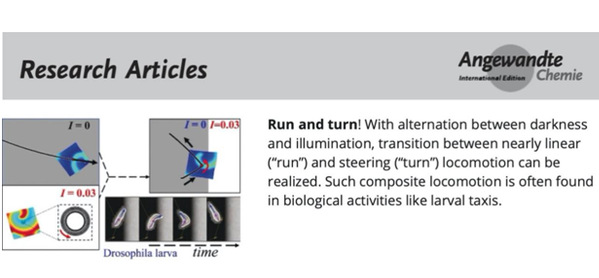CUMT Researchers Achieved Theoretical Progress on Angular Locomotion of an Active Matter Driven by Signal Waves
Publisher : Time : 19.June 2020 Browse the number :

Reciprocating migration and angular locomotion are fundamental modes of biological locomotion, which plays an essential role in ensuring the survival of living organisms. A system design theory on the bio-inspired locomotion above-mentioned in a nonequilibrium artificial system is a challenging task.
Prof. Qingyu Gao’s research group at CUMT’s School of Chemical Engineering and Technology (SCET) published a paper “Programmed Locomotion of an Active Gel Driven by Spiral Waves”. Working with coworkers at the University of Brandeis, the theory and design method of angular locomotion (and its composite modes) when an active gel is driven by spiral wave signals are established in this work. On the one hand, controlled by a programmed sequence of square wave pulses of illumination, complex modes of gel locomotion (triangular, petaloid, and pentagonal trajectories) are designed theoretically when the active gel is driven by illumination-alternated modes of the spiral waves. On the other hand, under differential illumination, such an active gel undergoes a photophobic turning-locomotion autonomously, similar to those seen in Drosophila larvae.
Some important conclusions can be drawn from a series of works of Gao’s group (Sci.Adv,2020; PNAS,2017 and Angew,2016): the directed locomotion of an active gel is originated from the bifurcation of signal dynamics, i.e., the reciprocating migration results from a homoclinic bifurcation or a boundary driven; meanwhile the angular locomotion generated from a local quasi-periodicity bifurcation of spiral wave signals.
Source:Ji chen,School of Chemical Engenieering&Technology
Editor: Zhang yuchuan
Reviewer: Zhang zhenkang